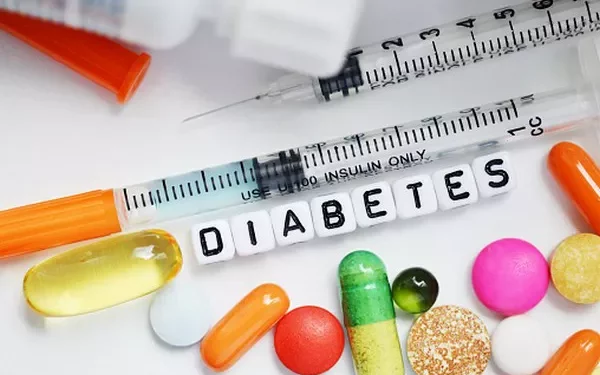Type 2 diabetes (T2D) is a chronic metabolic disorder characterized by high blood sugar levels resulting from insulin resistance and relative insulin deficiency. Unlike Type 1 diabetes, where the body’s immune system attacks insulin-producing beta cells in the pancreas, Type 2 diabetes is primarily driven by lifestyle factors and genetics. The prevalence of T2D has been rising globally, making it a significant public health concern. Understanding the pathophysiology of T2D is crucial for developing effective prevention and treatment strategies.
Insulin Resistance and Beta Cell Dysfunction
The pathophysiology of T2D involves two major defects: insulin resistance and beta cell dysfunction. These defects are interrelated and contribute to the hyperglycemia observed in individuals with T2D.
Insulin Resistance
Insulin resistance is a condition in which the body’s cells, particularly muscle, fat, and liver cells, do not respond adequately to insulin. Insulin is a hormone produced by the pancreas that allows cells to take in glucose from the bloodstream to be used for energy. When cells become resistant to insulin, glucose cannot be efficiently absorbed, leading to elevated blood sugar levels.
Several factors contribute to insulin resistance:
Genetics: Family history and genetic predisposition play a significant role in the development of insulin resistance.
Obesity: Excess body fat, particularly visceral fat, is strongly associated with insulin resistance. Adipose tissue releases free fatty acids and adipokines, which can interfere with insulin signaling.
Physical Inactivity: Lack of regular physical activity reduces glucose uptake by muscles, contributing to insulin resistance.
Diet: Diets high in refined carbohydrates, sugars, and saturated fats can promote insulin resistance.
Inflammation: Chronic low-grade inflammation, often associated with obesity, can impair insulin signaling pathways.
Beta Cell Dysfunction
The pancreas contains clusters of cells known as islets of Langerhans, which include insulin-producing beta cells. In T2D, these beta cells become dysfunctional over time and fail to produce sufficient insulin to compensate for insulin resistance.
Several mechanisms contribute to beta cell dysfunction:
Genetic Factors: Specific genetic mutations and polymorphisms can impair beta cell function and increase susceptibility to T2D.
Glucotoxicity: Chronic hyperglycemia can damage beta cells, a phenomenon known as glucotoxicity. High glucose levels increase oxidative stress and promote the formation of advanced glycation end products (AGEs), which can harm beta cells.
Lipotoxicity: Elevated levels of free fatty acids and triglycerides, often seen in obesity, can lead to lipotoxicity, damaging beta cells and impairing their function.
Endoplasmic Reticulum Stress: Beta cells are highly active in protein synthesis, making them susceptible to endoplasmic reticulum (ER) stress. Prolonged ER stress can trigger beta cell apoptosis (cell death).
Incretin Hormone Deficiency: Incretins, such as glucagon-like peptide-1 (GLP-1), are hormones that enhance insulin secretion in response to food intake. In T2D, there is often a deficiency or impaired action of incretins, leading to reduced insulin secretion.
Role of the Liver in Type 2 Diabetes
The liver plays a central role in glucose homeostasis. It stores glucose in the form of glycogen and releases it into the bloodstream during fasting or between meals. In T2D, hepatic glucose production is dysregulated, contributing to fasting hyperglycemia.
Increased Hepatic Glucose Production
In individuals with T2D, the liver becomes insensitive to insulin’s inhibitory effects on glucose production. As a result, the liver continues to produce glucose even when blood sugar levels are elevated. This phenomenon is partly due to increased gluconeogenesis (the production of glucose from non-carbohydrate sources) and glycogenolysis (the breakdown of glycogen to release glucose).
Decreased Glycogen Synthesis
Insulin promotes glycogen synthesis in the liver. In T2D, insulin resistance impairs this process, leading to decreased glycogen storage and increased glucose release into the bloodstream.
Adipose Tissue and Inflammation
Adipose tissue, particularly visceral fat, is an active endocrine organ that secretes various hormones and cytokines known as adipokines. In T2D, dysfunctional adipose tissue contributes to insulin resistance and systemic inflammation.
Adipokines
Adipokines, such as leptin, adiponectin, resistin, and tumor necrosis factor-alpha (TNF-α), play critical roles in glucose metabolism and insulin sensitivity. In obesity and T2D, there is an imbalance in adipokine secretion:
Leptin: Leptin regulates appetite and energy balance. In obesity, leptin levels are elevated, but there is often leptin resistance, leading to impaired regulation of food intake and energy expenditure.
Adiponectin: Adiponectin enhances insulin sensitivity and has anti-inflammatory properties. In T2D, adiponectin levels are typically reduced, contributing to insulin resistance.
Resistin: Resistin promotes insulin resistance and inflammation. Elevated resistin levels are associated with T2D and obesity.
TNF-α: TNF-α is a pro-inflammatory cytokine that impairs insulin signaling pathways. Increased TNF-α levels in adipose tissue contribute to insulin resistance.
Inflammation
Chronic low-grade inflammation is a hallmark of T2D and obesity. Inflammatory cytokines released from adipose tissue can interfere with insulin signaling and promote insulin resistance. Additionally, inflammation can contribute to beta cell dysfunction and promote the development of atherosclerosis, increasing the risk of cardiovascular complications in individuals with T2D.
Gut Microbiota and Type 2 Diabetes
Emerging research suggests that the gut microbiota, the community of microorganisms residing in the gastrointestinal tract, plays a role in the pathophysiology of T2D. The composition and diversity of gut microbiota can influence metabolism, inflammation, and insulin sensitivity.
Dysbiosis
Dysbiosis, an imbalance in gut microbiota, is commonly observed in individuals with T2D. Factors such as diet, antibiotics, and lifestyle can disrupt the gut microbiota, leading to metabolic disturbances.
Short-Chain Fatty Acids (SCFAs)
SCFAs, such as acetate, propionate, and butyrate, are produced by gut bacteria during the fermentation of dietary fiber. SCFAs have beneficial effects on glucose metabolism and insulin sensitivity. In T2D, there is often a reduction in SCFA-producing bacteria, leading to impaired metabolic regulation.
Endotoxemia
Increased intestinal permeability, or “leaky gut,” can allow bacterial endotoxins (lipopolysaccharides) to enter the bloodstream, triggering systemic inflammation. This endotoxemia is associated with insulin resistance and metabolic dysfunction in T2D.
Hormonal Regulation and Type 2 Diabetes
Hormones other than insulin also play crucial roles in the regulation of glucose metabolism and contribute to the pathophysiology of T2D.
Glucagon
Glucagon is a hormone produced by alpha cells in the pancreas that raises blood glucose levels by stimulating hepatic glucose production. In T2D, there is often hyperglucagonemia, an overproduction of glucagon, contributing to fasting hyperglycemia.
Amylin
Amylin is a hormone co-secreted with insulin by beta cells. It helps regulate blood glucose levels by slowing gastric emptying and promoting satiety. In T2D, amylin secretion is often reduced, leading to impaired postprandial glucose control.
Cortisol
Cortisol, a stress hormone produced by the adrenal glands, increases blood glucose levels by promoting gluconeogenesis and reducing insulin sensitivity. Chronic stress and elevated cortisol levels can exacerbate insulin resistance and contribute to T2D.
Growth Hormone
Growth hormone, produced by the pituitary gland, has anti-insulin effects, promoting gluconeogenesis and lipolysis. Excess growth hormone, as seen in conditions like acromegaly, can lead to insulin resistance and T2D.
Genetic Factors in Type 2 Diabetes
Genetics play a significant role in the susceptibility to T2D. Several genetic variants have been identified that influence insulin secretion, insulin action, and beta cell function.
Monogenic Forms of Diabetes
While T2D is typically polygenic, there are rare monogenic forms of diabetes caused by single gene mutations. Examples include maturity-onset diabetes of the young (MODY) and neonatal diabetes. Identifying these mutations can provide insights into the molecular mechanisms of T2D.
Polygenic Risk
Most cases of T2D result from the interaction of multiple genetic variants, each contributing a small risk. Genome-wide association studies (GWAS) have identified numerous loci associated with T2D susceptibility. These loci often involve genes related to beta cell function, insulin signaling, and glucose metabolism.
Epigenetics
Epigenetic modifications, such as DNA methylation and histone modifications, can influence gene expression without altering the DNA sequence. Environmental factors, such as diet and physical activity, can impact epigenetic marks and contribute to the development of T2D.
Environmental and Lifestyle Factors
Environmental and lifestyle factors play a significant role in the development and progression of T2D.
Diet
Dietary habits are critical determinants of T2D risk. Diets high in refined carbohydrates, sugars, and unhealthy fats can promote insulin resistance and obesity. Conversely, diets rich in whole grains, fiber, fruits, vegetables, and healthy fats can improve insulin sensitivity and reduce T2D risk.
Physical Activity
Regular physical activity enhances insulin sensitivity, promotes weight loss, and improves glucose metabolism. Sedentary behavior is a significant risk factor for T2D.
Sleep
Poor sleep quality and insufficient sleep are associated with insulin resistance and an increased risk of T2D. Sleep disorders, such as sleep apnea, are common in individuals with obesity and T2D.
Stress
Chronic stress can elevate cortisol levels, promote unhealthy eating behaviors, and reduce physical activity, contributing to insulin resistance and T2D.
Environmental Toxins
Exposure to environmental toxins, such as endocrine-disrupting chemicals (e.g., bisphenol A, phthalates), can interfere with metabolic regulation and increase the risk of T2D.
Complications of Type 2 Diabetes
Chronic hyperglycemia in T2D can lead to a range of complications affecting various organ systems.
Cardiovascular Disease
Individuals with T2D are at an increased risk of cardiovascular disease, including coronary artery disease, stroke, and peripheral artery disease. Hyperglycemia, insulin resistance, and dyslipidemia contribute to atherosclerosis and cardiovascular complications.
Nephropathy
Diabetic nephropathy is a common complication of T2D, characterized by kidney damage and impaired renal function. It is a leading cause of end-stage renal disease.
Neuropathy
Diabetic neuropathy involves nerve damage, leading to symptoms such as pain, tingling, and numbness. It can affect peripheral nerves, autonomic nerves, and cranial nerves.
Retinopathy
Diabetic retinopathy is a leading cause of blindness in adults. Chronic hyperglycemia damages blood vessels in the retina, leading to vision loss.
Foot Complications
Individuals with T2D are at risk of developing foot ulcers and infections due to neuropathy and poor blood circulation. These complications can lead to amputation if not managed properly.
Macrovascular Complications
In addition to microvascular complications, T2D is associated with macrovascular complications, such as increased risk of myocardial infarction and stroke.
See also: What is Diabetes Reversal?
Conclusion
The pathophysiology of Type 2 diabetes is complex and multifactorial, involving insulin resistance, beta cell dysfunction, genetic predisposition, and environmental factors. Understanding these mechanisms is essential for developing targeted therapies and preventive strategies. Effective management of T2D requires a comprehensive approach, including lifestyle modifications, pharmacotherapy, and regular monitoring to prevent complications and improve the quality of life for individuals living with this chronic condition.
Related topics:
What is Diabetes: Definition and Types


























